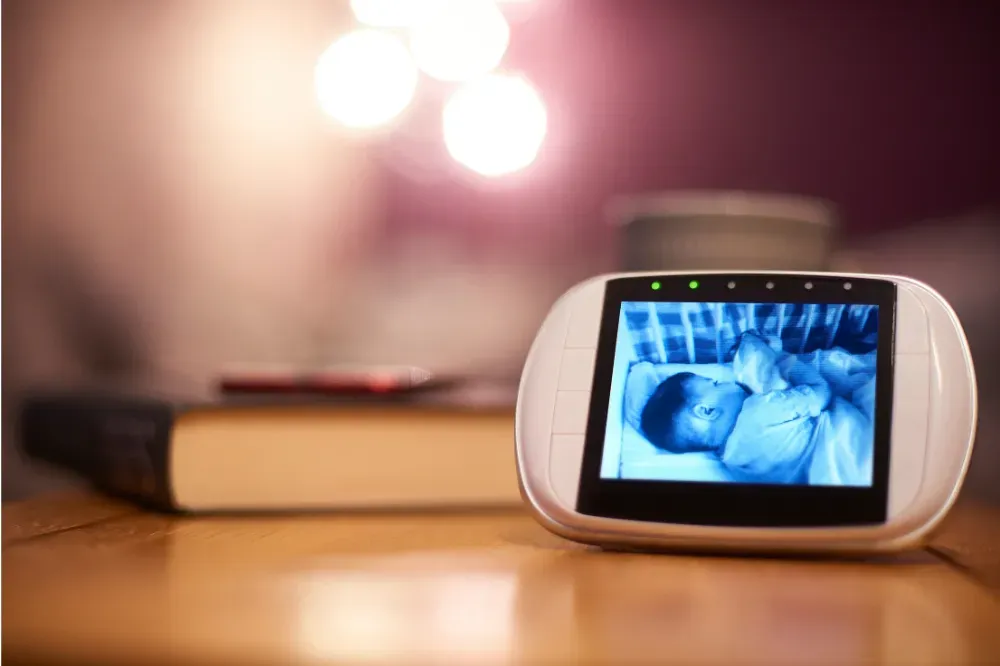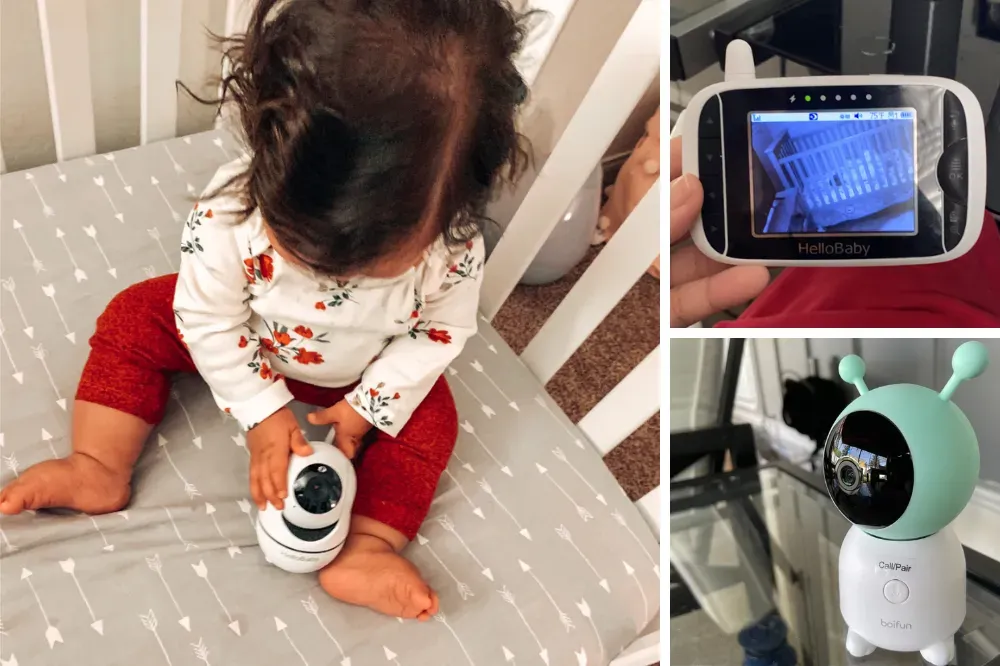Key Takeaways:
- Non-WiFi baby monitors are generally considered more secure than WiFi models due to their lack of internet connectivity.
- Digital baby monitors with FHSS technology offer enhanced security against hacking attempts.
- Regularly updating security settings and being aware of potential risks can help prevent unauthorized access to baby monitors.
As new parents, the safety and security of your little one is paramount. In the digital age, even the devices designed to keep an eye on your baby can be vulnerable to security threats. The question "Can non-WiFi baby monitors be hacked?" is a concern that resonates with many families. This article delves into the intricacies of baby monitor security, exploring whether non-WiFi baby monitors are a safer choice and how you can protect your family from potential risks.
The Basics of Non-WiFi Baby Monitors
Non-WiFi baby monitors, also known as radio frequency monitors or analog monitors, operate by transmitting audio and video signals over a specific frequency band. Unlike WiFi baby monitors, they do not require an internet connection to function, which inherently reduces their exposure to the vast array of online threats. However, this does not mean they are impervious to hacking.
How Secure Are Non-WiFi Baby Monitors?
The security of non-WiFi baby monitors largely depends on the technology they employ. Digital baby monitors that use Frequency Hopping Spread Spectrum (FHSS) technology are considered more secure. FHSS makes it difficult for potential hackers to intercept the signal as it rapidly switches between different frequencies.

The Vulnerabilities of Analog Monitors
Analog baby monitors, on the other hand, are more susceptible to interception. Since they transmit signals on the same frequency, it's possible for other devices operating on the same frequency to pick up the audio and video feed. This could lead to accidental eavesdropping or, in worse cases, intentional spying.
Digital Enhanced Cordless Telecommunications (DECT)
DECT is another secure technology used in digital baby monitors. It ensures that the audio quality is clear and free from background noise, while also providing a more secure connection compared to analog monitors. DECT monitors are less likely to be intercepted, offering parents peace of mind.
The Risk of Default Settings
One of the potential security risks with any baby monitor, including non-WiFi models, is the use of default settings. Default camera access ports, login credentials, and passwords can be easily exploited by hackers. It's crucial for parents to change these settings to something unique and secure.
Best Practices for Secure Baby Monitors
To ensure your non-WiFi baby monitor is extra secure, regularly verify the monitor logs for strange access times and update the default login details to include strong passwords with special characters. Avoid using the same technology for multiple devices in the home to prevent cross-device vulnerabilities.
The Importance of Physical Security
Physical security is just as important as digital security. Placing the baby monitor out of reach and sight can help avoid unauthorized physical access. Additionally, ensuring that the parent unit is kept secure and monitoring who has access to it within the household is vital.

The Role of Baby Monitor Brands
Baby monitor manufacturers play a significant role in the security of their devices. Reputable brands often equip their monitors with advanced security features and regularly release firmware updates to address any security vulnerabilities that arise.
The Debate: Non-WiFi vs. WiFi Baby Monitors
While non-WiFi baby monitors are generally considered more secure due to their lack of internet connectivity, WiFi baby monitors offer the convenience of remote access and additional features like two-way audio and night vision. The best secure baby monitor for your family depends on your specific needs and how you balance convenience with security.
The Evolution of Baby Monitor Security
Over the years, baby monitor security has evolved significantly. From the first-ever baby monitor to the latest digital models, manufacturers have continuously worked to address security issues and enhance the safety of these devices. The Nanit Pro Smart Baby Monitor and Infant Optics DXR-8 are examples of modern monitors that prioritize security.
The Future of Baby Monitor Technology
As technology advances, so do the security measures in baby monitors. Features like two-factor authentication and encrypted video feeds are becoming more common. The Internet of Things (IoT) has also introduced smart baby monitors that integrate with home security systems for an added layer of protection.
Summary
Non-WiFi baby monitors offer a level of security that WiFi models may not, primarily due to their lack of internet connectivity. However, no device is entirely hack-proof. By understanding the technology behind these monitors, changing default settings, and following best practices, parents can significantly reduce the risk of their baby monitors being hacked. It's about finding the right balance between security and convenience to ensure your baby's safety and your peace of mind.
FAQ Section
Are non-WiFi baby monitors 100% secure from hacking?
No, non-WiFi baby monitors are not 100% secure from hacking. While the DECT standard used by many non-WiFi monitors is very secure, it's not impossible to crack. Any attacker would need to be in radio range, making these devices less vulnerable than their WiFi counterparts but not completely immune to potential threats.
What can I do to make my non-WiFi baby monitor more secure?
To make your non-WiFi baby monitor more secure, you could consider using a digital baby monitor. Digital monitors offer stronger encryption compared to analog models, making them harder to hack. Nevertheless, no system is entirely unhackable, and it's always important to be mindful of potential security risks.
Should I choose a non-WiFi baby monitor over a WiFi model for security reasons?
Choosing a non-WiFi baby monitor over a WiFi model can be a good idea if security is a primary concern. Non-WiFi or non- wi fi baby monitor models are less susceptible to hacking, which can lead to privacy breaches and compromise your child's safety. However, it's essential to take steps to secure any type of monitor to prevent unauthorized access.
Are non-WiFi baby monitors safer?
In terms of hacking risk, non-WiFi baby monitors are often considered safer because they don't connect to the internet. However, they're not entirely immune from interference, particularly if they're analog models. Therefore, while they may be "safer," it's crucial to take steps to secure them.
How does a baby monitor work without WiFi?
A baby monitor works without WiFi by using radio frequencies to transmit audio and video signals from the camera unit in your baby's room to the parent unit. This is the basic technology behind a non-WiFi baby monitor. Digital monitors also use radio frequencies but encrypt the signal for added security.
Can someone hack a non-WiFi baby monitor?
Yes, someone can hack a non-WiFi baby monitor, particularly if it's an analog analog baby monitor. These monitors transmit signals over radio frequencies that can potentially be picked up by other devices operating on the same frequency. However, the chances of this happening are much lower than with a WiFi monitor.
Is it better to have a baby monitor with WiFi?
Deciding whether a baby monitor with WiFi is better largely depends on your individual needs and concerns. WiFi baby monitors require an internet connection and offer advanced features like checking on your baby from your smartphone. However, they are more susceptible to hacking risks. On the other hand, non-WiFi monitors are generally simpler, less prone to hacking, but they come with fewer features.
Why would you want a non-WiFi baby monitor?
You might want a non-WiFi baby monitor if you have concerns about the potential for your monitor to be hacked via the internet. Non-WiFi monitors are less susceptible to this type of hacking. They're also typically simpler to set up and use, as they don't require any network configuration or default camera access port adjustments.
How do I know if my baby monitor has been hacked?
There are certain indications that you may be dealing with a hacked baby monitor. These can include abrupt alterations in the camera's orientation, inexplicable sounds or voices emerging from the device, and instances of the monitor powering on and off without your command. If these symptoms arise and lead you to suspect that your monitor has been hacked, it's crucial to promptly take measures to bolster its security.












